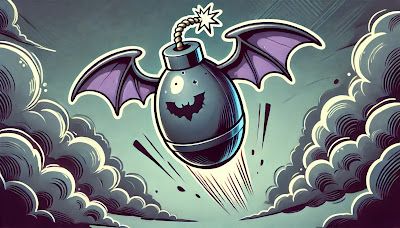#11. Wings of War 2
Lytle S. Adams was an unconventional inventor and dentist from Ohio with a flair for imaginative problem-solving. Known for devising quirky inventions and bold ideas, Adams was the type of person who saw potential in the unusual. In the early 1940s, during a visit to New Mexico’s Carlsbad Caverns, Adams found himself mesmerized by the swarms of bats emerging at dusk. He marveled at their sheer numbers and ability to squeeze into small crevices—a quality that would inspire one of the strangest wartime proposals in history.
After witnessing the bats at Carlsbad, it didn’t take long for Adams to come up with a plan to weaponize them. Leveraging his connections to the Roosevelts—he had a personal friendship with Eleanor Roosevelt—Adams outlined his wild idea in a letter to the White House. He argued that bats could be equipped with tiny incendiary devices and released over Japanese cities. Once released, the bats would instinctively roost in the eaves and attics of the predominantly wooden buildings, triggering widespread fires. Adams pitched the plan as a low-cost, high-impact solution to weaken Japan’s infrastructure. To his amazement, his proposal gained enough traction to secure official government interest, paving the way for the bizarre experiment to become reality.
The U.S. Navy adopted Adams' proposal and development was soon underway. The bats were rigged with tiny napalm-like incendiary devices and tested in various scenarios. During one infamous test at a U.S. Army base in Carlsbad, several bats escaped, setting the base’s own buildings on fire—an ironic twist that both showcased the bombs’ potential and highlighted the risks of working with unpredictable flying creatures. Despite setbacks, the project continued to show promise in its ability to cause destruction while minimizing casualties.
Project X-Ray’s ultimate goal was to target Tokyo, a city of densely packed wooden buildings vulnerable to fire. The plan involved releasing thousands of bats equipped with incendiary devices to wreak havoc on Japan’s infrastructure. However, as World War II escalated, the U.S. shifted its focus to a newly developed weapon with unheard of destructive potential. With the successful detonation of the atomic bomb at Los Alamos, Project X-Ray was deemed unnecessary, and the bats were retired from military service.
Lytle S. Adams’ bat bomb was equal parts audacious and ingenious, further illustrating our country's complete willingness to let professionals from the medical field come in to develop highly experimental and destructive animal hybrid weapons for the military. Personally, I've been training a small squadron of rats to hold little machine guns. Early tests are promising but we're way over the cheese budget.


